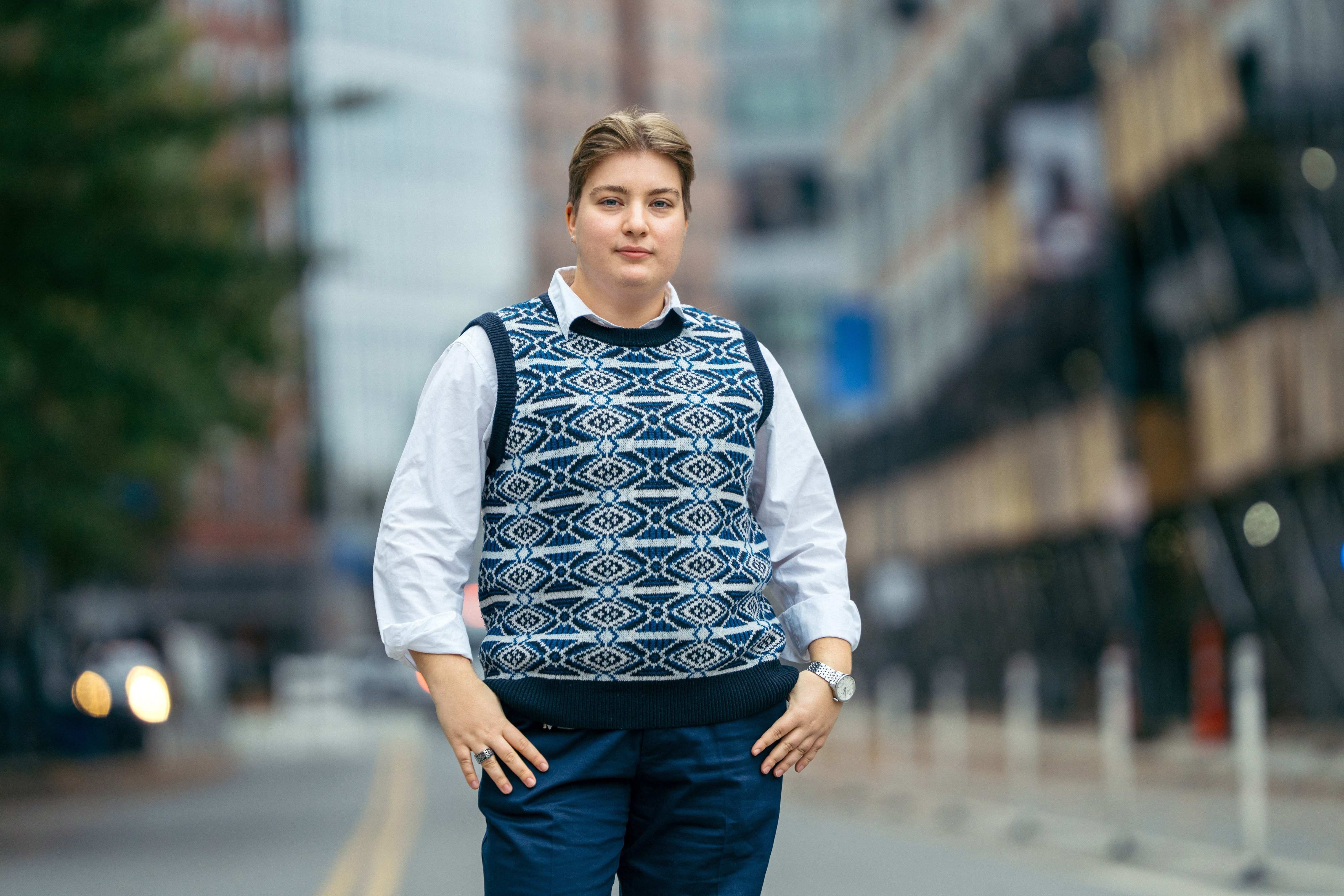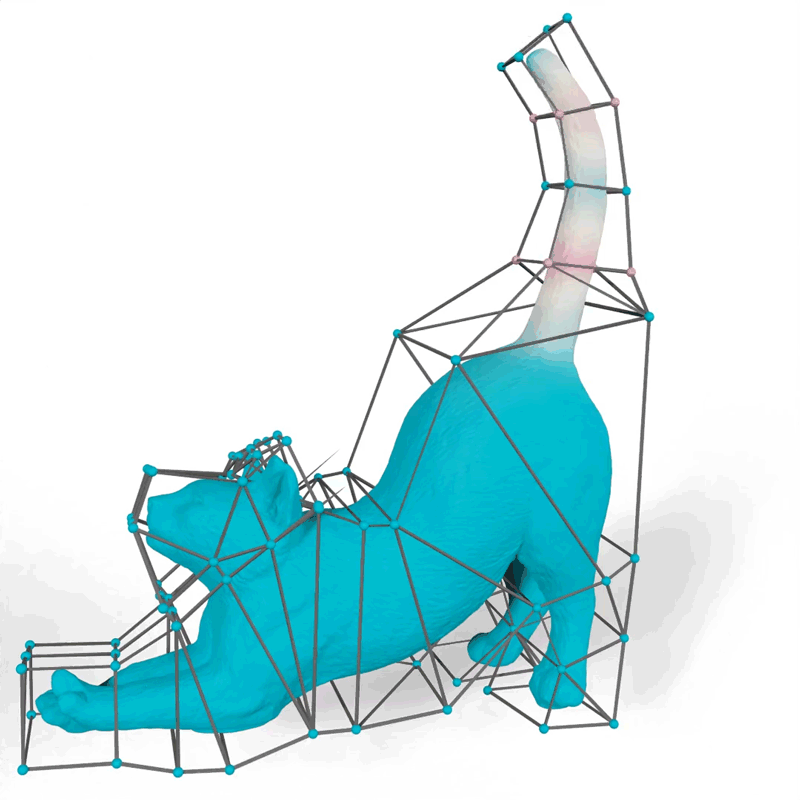Chatbot users often recommend treating a series of prompts like a conversation, but how does the chatbot know…
Clinicians could be fooled by biased AI, despite explanations – Technology Org
Artificial intelligence (AI) models in healthcare are a double-edged sword, with models improving diagnostic decisions for some demographics…
How using new organ storage technology can improve liver transplantations – Technology Org
In the world of liver transplantation, normothermic blood-based machine perfusion is a giant leap forward in innovation and…
Wildfires can unlock toxic metal particles from soils – Technology Org
A new study from Stanford University finds that wildfires can transform benign metals in soils and plants into…
Meta-learning to find every needle in every haystack – Technology Org
The quest to efficiently identify regions of interest in geospatial exploration has recently taken a leap forward with…
New strategy reveals ‘full chemical complexity’ of quantum decoherence – Technology Org
The findings can be used to design molecules with custom quantum coherence properties, laying the chemical foundation for…
The science and art of complex systems

As a high school student, Gosha Geogdzhayev attended Saturday science classes at Columbia University, including one called The Physics of Climate Change. “They showed us a satellite image of the Earth’s atmosphere, and I thought, ‘Wow, this is so beautiful,’” he recalls. Since then, climate science has been one of his driving interests.
With the MIT Department of Earth, Atmospheric and Planetary Sciences and the BC3 Climate Grand Challenges project, Geogdzhayeva is creating climate model “emulators” in order to localize the large-scale data provided by global climate models (GCMs). As he explains, GCMs can make broad predictions about climate change, but they are not proficient at analyzing impacts in localized areas. However, simpler “emulator” models can learn from GCMs and other data sources to answer specialized questions. The model Geogdzhayev is currently working on will project the frequency of extreme heat events in Nigeria.
A senior majoring in physics, Geogdzhayev hopes that his current and future research will help reshape the scientific approach to studying climate trends. More accurate predictions of climate conditions could have benefits far beyond scientific analysis, and affect the decisions of policymakers, businesspeople, and truly anyone concerned about climate change.
“I have this fascination with complex systems, and reducing that complexity and picking it apart,” Geogdzhayev says.
His pursuit of discovery has led him from Berlin, Germany, to Princeton, New Jersey, with stops in between. He has worked with Transsolar KlimaEngineering, NASA, NOAA, FU Berlin, and MIT, including through the MIT Climate Stability Consortium’s Climate Scholars Program, in research positions that explore climate science in different ways. His projects have involved applications such as severe weather alerts, predictions of late seasonal freezes, and eco-friendly building design.
The written word
Originating even earlier than his passion for climate science is Geogdzhayev’s love of writing. He recently discovered original poetry dating back all the way to middle school. In this poetry he found a coincidental throughline to his current life: “There was one poem about climate, actually. It was so bad,” he says, laughing. “But it was cool to see.”
As a scientist, Geogdzhayev finds that poetry helps quiet his often busy mind. Writing provides a vehicle to understand himself, and therefore to communicate more effectively with others, which he sees as necessary for success in his field.
“A lot of good work comes from being able to communicate with other people. And poetry is a way for me to flex those muscles. If I can communicate with myself, and if I can communicate myself to others, that is transferable to science,” he says.
Since last spring Geogdzhayev has attended poetry workshop classes at Harvard University, which he enjoys partly because it nudges him to explore spaces outside of MIT.
He has contributed prolifically to platforms on campus as well. Since his first year, he has written as a staff blogger for MIT Admissions, creating posts about his life at MIT for prospective students. He has also written for the yearly fashion publication “Infinite Magazine.”
Merging both science and writing, a peer-reviewed publication by Geogdzhayev will soon be published in the journal “Physica D: Nonlinear Phenomena.” The piece explores the validity of climate statistics under climate change through an abstract mathematical system.
Leading with heart
Geogdzhayev enjoys being a collaborator, but also excels in leadership positions. When he first arrived at MIT, his dorm, Burton Conner, was closed for renovation, and he could not access that living community directly. Once his sophomore year arrived however, he was quick to volunteer to streamline the process to get new students involved, and eventually became floor chair for his living community, Burton 1.
Following the social stagnation caused by the Covid-19 pandemic and the dorm renovation, he helped rebuild a sense of community for his dorm by planning social events and governmental organization for the floor. He now regards the members of Burton 1 as his closest friends and partners in “general tomfoolery.”
This sense of leadership is coupled with an affinity for teaching. Geogdzhayev is a peer mentor in the Physics Mentorship Program and taught climate modeling classes to local high school students as a part of SPLASH. He describes these experiences as “very fun” and can imagine himself as a university professor dedicated to both teaching and research.
Following graduation, Geogdzhayev intends to pursue a PhD in climate science or applied math. “I can see myself working on research for the rest of my life,” he says.
A flexible solution to help artists improve animation
Artists who bring to life heroes and villains in animated movies and video games could have more control over their animations, thanks to a new technique introduced by MIT researchers.
Their method generates mathematical functions known as barycentric coordinates, which define how 2D and 3D shapes can bend, stretch, and move through space. For example, an artist using their tool could choose functions that make the motions of a 3D cat’s tail fit their vision for the “look” of the animated feline.

Image: Courtesy of the researchers
Many other techniques for this problem are inflexible, providing only a single option for the barycentric coordinate functions for a certain animated character. Each function may or may not be the best one for a particular animation. The artist would have to start from scratch with a new approach each time they want to try for a slightly different look.
“As researchers, we can sometimes get stuck in a loop of solving artistic problems without consulting with artists. What artists care about is flexibility and the ‘look’ of their final product. They don’t care about the partial differential equations your algorithm solves behind the scenes,” says Ana Dodik, lead author of a paper on this technique.
Beyond its artistic applications, this technique could be used in areas such as medical imaging, architecture, virtual reality, and even in computer vision as a tool to help robots figure out how objects move in the real world.
Dodik, an electrical engineering and computer science (EECS) graduate student, wrote the paper with Oded Stein, assistant professor at the University of Southern California’s Viterbi School of Engineering; Vincent Sitzmann, assistant professor of EECS who leads the Scene Representation Group in the MIT Computer Science and Artificial Intelligence Laboratory (CSAIL); and senior author Justin Solomon, an associate professor of EECS and leader of the CSAIL Geometric Data Processing Group. The research was recently presented at SIGGRAPH Asia.
A generalized approach
When an artist animates a 2D or 3D character, one common technique is to surround the complex shape of the character with a simpler set of points connected by line segments or triangles, called a cage. The animator drags these points to move and deform the character inside the cage. The key technical problem is to determine how the character moves when the cage is modified; this motion is determined by the design of a particular barycentric coordinate function.
Traditional approaches use complicated equations to find cage-based motions that are extremely smooth, avoiding kinks that could develop in a shape when it is stretched or bent to the extreme. But there are many notions of how the artistic idea of “smoothness” translates into math, each of which leads to a different set of barycentric coordinate functions.
The MIT researchers sought a general approach that allows artists to have a say in designing or choosing among smoothness energies for any shape. Then the artist could preview the deformation and choose the smoothness energy that looks the best to their taste.
Although flexible design of barycentric coordinates is a modern idea, the basic mathematical construction of barycentric coordinates dates back centuries. Introduced by the German mathematician August Möbius in 1827, barycentric coordinates dictate how each corner of a shape exerts influence over the shape’s interior.
In a triangle, which is the shape Möbius used in his calculations, barycentric coordinates are easy to design — but when the cage isn’t a triangle, the calculations become messy. Making barycentric coordinates for a complicated cage is especially difficult because, for complex shapes, each barycentric coordinate must meet a set of constraints while being as smooth as possible.
Diverging from past work, the team used a special type of neural network to model the unknown barycentric coordinate functions. A neural network, loosely based on the human brain, processes an input using many layers of interconnected nodes.
While neural networks are often applied in AI applications that mimic human thought, in this project neural networks are used for a mathematical reason. The researchers’ network architecture knows how to output barycentric coordinate functions that satisfy all the constraints exactly. They build the constraints directly into the network, so when it generates solutions, they are always valid. This construction helps artists design interesting barycentric coordinates without having to worry about mathematical aspects of the problem.
“The tricky part was building in the constraints. Standard tools didn’t get us all the way there, so we really had to think outside the box,” Dodik says.
Virtual triangles
The researchers drew on the triangular barycentric coordinates Möbius introduced nearly 200 years ago. These triangular coordinates are simple to compute and satisfy all the necessary constraints, but modern cages are much more complex than triangles.
To bridge the gap, the researchers’ method covers a shape with overlapping virtual triangles that connect triplets of points on the outside of the cage.
“Each virtual triangle defines a valid barycentric coordinate function. We just need a way of combining them,” she says.
That is where the neural network comes in. It predicts how to combine the virtual triangles’ barycentric coordinates to make a more complicated, but smooth function.
Using their method, an artist could try one function, look at the final animation, and then tweak the coordinates to generate different motions until they arrive at an animation that looks the way they want.
“From a practical perspective, I think the biggest impact is that neural networks give you a lot of flexibility that you didn’t previously have,” Dodik says.
The researchers demonstrated how their method could generate more natural-looking animations than other approaches, like a cat’s tail that curves smoothly when it moves instead of folding rigidly near the vertices of the cage.
In the future, they want to try different strategies to accelerate the neural network. They also want to build this method into an interactive interface that would enable an artist to easily iterate on animations in real time.
This research was funded, in part, by the U.S. Army Research Office, the U.S. Air Force Office of Scientific Research, the U.S. National Science Foundation, the CSAIL Systems that Learn Program, the MIT-IBM Watson AI Lab, the Toyota-CSAIL Joint Research Center, Adobe Systems, a Google Research Award, the Singapore Defense Science and Technology Agency, and the Amazon Science Hub.
Revolutionizing Physical Skills: AI Robot Surpasses Human Ability in Labyrinth Marble Game
In a groundbreaking development, researchers at ETH Zurich have made a significant leap in artificial intelligence, demonstrating that AI can now outperform humans in tasks requiring physical skills. This breakthrough was showcased through their AI robot, CyberRunner, which mastered the labyrinth marble game, a test of…
The Top 10 Xbox Series X Games
Halo Infinite is a genuine love letter to what originally made Halo, as a series, the powerhouse franchise it is today. It did so while also breaking new ground for the sci-fi shooter. Opting to ditch the more linear structure of previous Halo campaigns, Halo Infinite presents players with a semi-open world set on the broken but lush ring known as the Zeta Halo. It’s filled with Forerunner secrets, collectibles, Banished outposts, and so much more. When you’re not exploring Zeta Halo, you’ll likely find yourself enthralled with the story missions set throughout the ring.
Featuring a more Halo: Combat Evolved-style of storytelling, if you’re a fan of the older games, something tells us you’re going to really enjoy what the Halo Infinite campaign has to offer. On top of that, Halo Infinite comes with a full multiplayer suite that’s entirely free-to-play, which means if you own an Xbox Series X/S, Xbox One, or a PC, you can jump in right now. Complete with a unique battle pass system, nearly a dozen maps, punchy weapons you know and love, and some of the series’ best combat to date, Halo Infinite’s multiplayer is sure to have you saying “just one more match.” Halo Infinite isn’t just a great game – it’s the best Halo’s been in years. | Our Review

